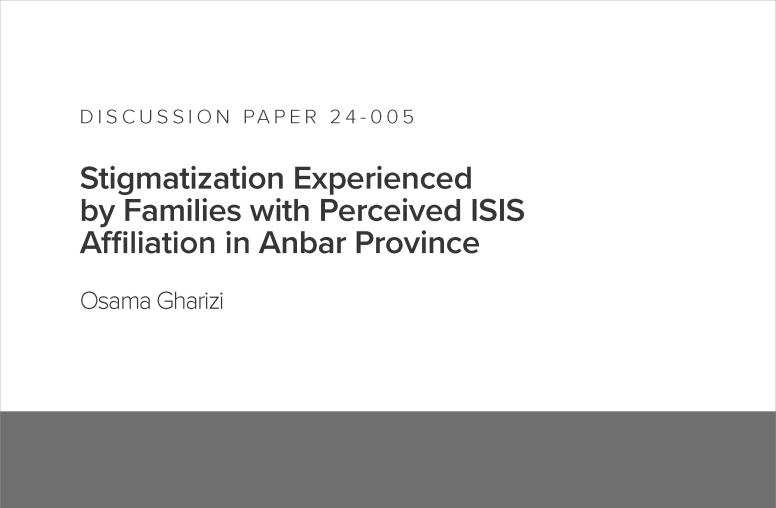ISIS Returnees: Can Ex-Fighters Be Rehabilitated?
To reintegrate former Islamic State militants into society, a holistic and individual approach offers the best—if uncertain—option, researchers say.
As the last pockets of the Islamic State’s “caliphate” collapse this month, nations far from the battlefield face an increasingly urgent challenge: How to reintegrate the group’s former militants as they come home and seek to disengage from extremist violence. For the officials in charge of the process, it’s an undertaking fraught with uncertainty whose failure could mean continued recruitment or even terrorism on their streets.

Unfortunately, no one-size-fits-all policy will work for these individuals. The former militants’ societies stigmatize them in various ways and to differing degrees, and each returnee has suffered his or her own, distinct trauma. The best option, according to experts in the psychological structure of violent extremism, is the most difficult and expensive one: To address on an individual basis what led the returnee to ISIS and how they can best recover from the resulting traumas.
More than 7,000 of the estimated 40,000 foreign fighters that ISIS drew to it ranks have returned home or relocated elsewhere. While their reasons for joining are as varied as their countries and communities of origin, in general their motives were more personal than ideological, researchers say. Many sought a sense of belonging and acceptance and an escape from unemployment, political disillusion and disenfranchisement. Violent extremist groups tapped into that discontent with individualized appeals derived from lengthy contact and conversation, offering an alternative lifestyle.
Jesse Morton, a former radical jihadi turned FBI informant and now co-director of an organization that counters extremism, described his own rehabilitation at a USIP event in November where experts discussed the personal barriers that confront people abandoning violent militancy.
Born in Pennsylvania and a graduate of Columbia University, Morton said traumatic childhood events propelled him toward a life of drugs and run-ins with the law. Arrested at 21, he was imprisoned in Virginia, where he began to identify with the teachings of a Moroccan cellmate. His conversion to Islam provided a sense of “stability where there was none,” he said. He took the name Younus Abdullah Muhammed and would become a leading recruiter for al-Qaida. For four years Morton ran a website called “Revolution Muslim” and recruited outside mosques around Harlem.
Violent Extremist Ideology
Morton said he played on the same vulnerabilities that he felt growing up and became a proponent for an ideology attractive to people frustrated with society, with his website influencing home-grown radicals such as “Jihadi Jane.” He eventually fled the United States after associates of his threatened the creators of the TV show, "South Park."
Before long, Morton was arrested in Morocco and transferred to U.S. custody to stand trial. While incarcerated, his handlers’ empathetic gestures, such as allowing him to keep his Quran and providing access the prison library, conflicted with his radical narrative, and he began to question his violent extremist ideology, he said. The process set off by this cognitive dissonance led him to reject extremism and seek to help others address their personal issues.
Morton’s story underscores the interplay between past psychological experiences and the adoption of violent ideologies; it likewise illustrates the importance of creating an environment conducive to personal transformation for people returning from living with ISIS.
Rehabilitation and reintegration programs need to be tailored to the individual much like the customized pitches of ISIS recruiters, researchers say, focusing, for example, on disillusionment with the brutality of war or the group’s false promises.
Past programs, particularly in Europe, have been plagued by controversy. Britain’s Prevent Program only solidified its targets’ sense of exclusion and alienated their communities by over-emphasizing security rather than rehabilitation. France’s Pontourny Center, set up for deradicalization in a remote area for individuals referred by local authorities, closed in less than a year after no one agreed to take part in it.
Vulnerable Communities
Programs keyed to working with vulnerable communities have shown promising results. The Aarhus model in Denmark and Slotevaart in the Netherlands emphasize community engagement to address grievances. Both have been seen as successful, especially by returnees who have sought out services including psychological support, financial guidance, and social bonding through mentorship and counseling. The Danish program involved only 18 returnees since 2016, however. Whether it can be applied on a wider scale remains a question, and the expenditure of government funds on former ISIS fighters has sparked public criticism.
Governments must weigh the risks ex-militants pose against the costs of what appear to be the most effective programs in promoting behavioral change, but less wealthy countries may choose cheaper alternatives. A Sri Lankan program, for example, stresses creating a renewed sense of citizenship by engaging in social, cultural and religious activities, while in Somalia successful programs emphasize family bonding to promote community acceptance and ease the stigma of past violent extremism.
In any case, a comprehensive review of rehabilitation programs by the RAND Corporation confirms the link between emotional wellbeing and rehabilitation.
Governments can look to a range of roadmaps in designing rehabilitation efforts including the Global Counterterrorism Forum’s Ankara Memorandum and the European Commission’s Radicalization Awareness Network. Sometimes, the best response may be incarceration and other forms of legal punishment, though the best evidence suggests that to be effective punitive and security measures need be supplemented with community-oriented solutions. One thing is certain: For the officials managing the fraught and uncertain task of rehabilitating ISIS militants there are no easy answers.
Michael Darden is a program specialist for Countering Violent Extremism at the U.S. Institute of Peace.



